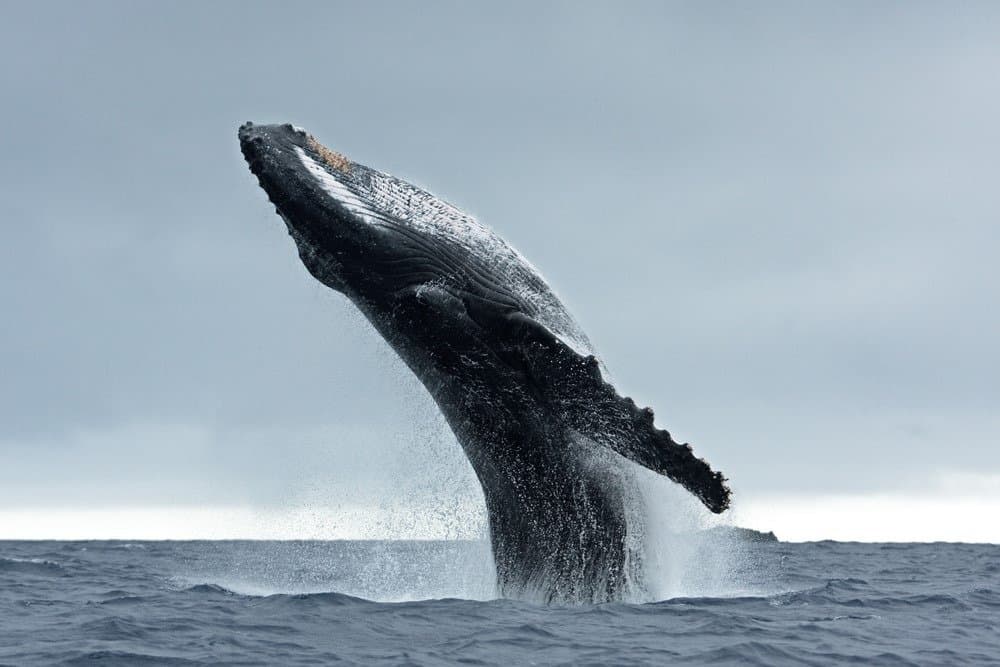This humpback whale decided it was going to put on a show for the watching tourists. It starts by swimming close to the boat giving them a great view of its huge size. Then, it follows up these moves with a tail flick to demonstrate just how much spray it can generate.
Being this close to such a magnificent animal truly is a privilege.
Watch the Action Now
Where Do Humpback Whales Normally Live?
The scientific name for humpback whales is Megaptera novaeangliae and they are a member of the Cetacea order along with dolphins and porpoises. They are large animals that can reach over 100 tons in weight and lengths of over 60 feet. These whales are found in polar and tropical waters and are most often spotted in the Atlantic, Arctic, and Pacific Oceans. However, their range extends into the Bering Sea and waters around Antarctica.
When they are migrating, humpback whales can be seen in coastal waters. Having said that, they do not usually come close to the coast. They live in isolated populations that do not intermix. These include two populations in the North Atlantic Ocean and two in the North Pacific.
How Do Humpback Whales Normally Behave?

Breaching is a spectacular humpback whale move.
©Martin Prochazkacz/Shutterstock.com
Humpback whales live in groups and can swim at speeds of 16 miles per hour. They can dive for periods of 15 to 20 minutes and need to surface for around four minutes between dives. Humpback whales have some impressive moves! What we see here is ‘tail slapping’ which is sometimes called ‘lobtailing’. As you can see in this clip, they lift their tail out of the water and then slap it forcefully downwards. They can carry out this move lying on their bellies or their backs.
Another common humpback move is ‘spyhopping’. Here, the humpback positions itself vertically with its head out of the water. In this position, it may rotate up to 180 degrees and then disappear back into the depths.
Breaching is perhaps the most spectacular humpback move of all. During this maneuver, the enormous animal can propel most, if not all, of its body out of the water. At the same time, they may spin clockwise or counterclockwise and can land on their back or side. We can only imagine the amount of spray that it would produce and how it would feel if you got too close to it!
Thank you for reading! Have some feedback for us? Contact the AZ Animals editorial team.








